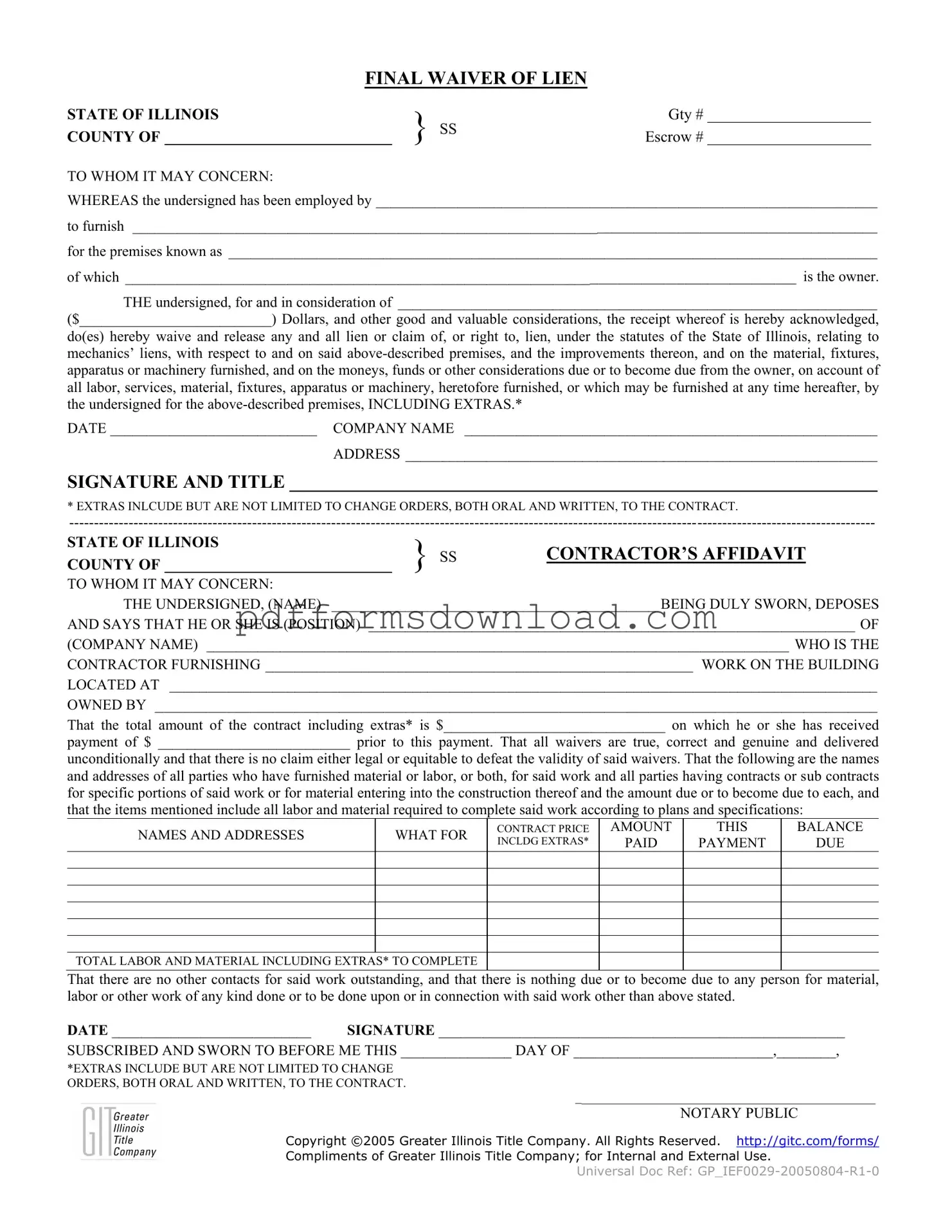What is the Illinois Final Waiver of Lien form?
The Illinois Final Waiver of Lien form is a legal document used by contractors and subcontractors to waive their right to file a mechanics' lien against a property. This form confirms that the contractor has received full payment for work completed and releases any claims against the property owner for labor, materials, or services provided.
When should the Illinois Final Waiver of Lien be used?
This form should be used when a contractor or subcontractor has completed their work on a project and has received final payment. It serves as proof that all financial obligations have been met, ensuring that the property owner is protected from potential lien claims after payment is made.
Who needs to sign the Illinois Final Waiver of Lien?
The form must be signed by the contractor or subcontractor who performed the work. This individual must also provide their title and the name of the company they represent. The signature confirms that they are waiving any future claims against the property related to the work performed.
What information is required on the form?
Key information required includes the name of the contractor, the owner of the property, a description of the work performed, the total contract amount, the amount received prior to this payment, and any extras or change orders. The form also requires the date and the contractor's signature.
What does "extras" refer to in this context?
In the Illinois Final Waiver of Lien, "extras" refer to any additional work or materials that were not included in the original contract. This can include change orders, whether they were made orally or in writing. It is important to account for these when determining the total contract amount.
Is notarization required for the Illinois Final Waiver of Lien?
Yes, notarization is required. The contractor must sign the form in front of a notary public, who will then certify the signature. This step adds a layer of authenticity and ensures that the document is legally binding.
What happens if a contractor does not use this form?
If a contractor does not use the Illinois Final Waiver of Lien form after receiving payment, they retain the right to file a mechanics' lien against the property. This could lead to legal disputes and complications for the property owner, as they may not be aware of any outstanding claims.
Can the waiver be revoked after it is signed?
Once the Illinois Final Waiver of Lien is signed and delivered, it typically cannot be revoked. The contractor acknowledges receipt of payment and waives their right to file a lien. It is crucial for contractors to ensure all terms are agreed upon before signing the form.
How does the Illinois Final Waiver of Lien protect property owners?
This waiver protects property owners by ensuring that once they have paid for the work completed, they are free from future claims related to that work. It provides peace of mind that all financial obligations have been settled, reducing the risk of unexpected legal issues.
